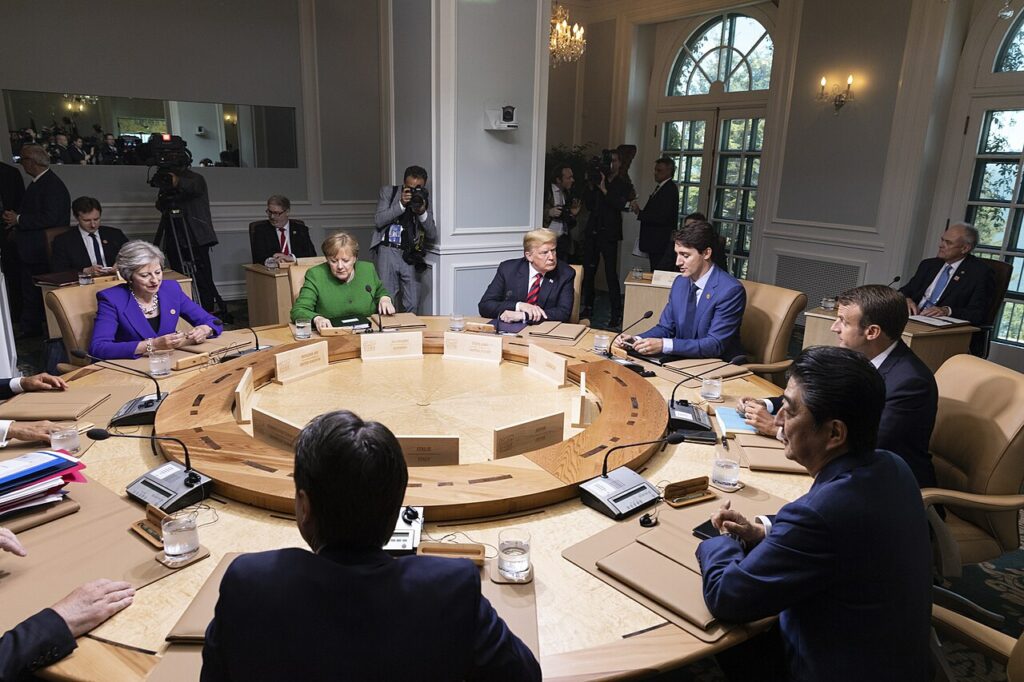
(Rightallegiance.com) – Former President Donald Trump left the G7 summit in Canada a day early, citing the escalating conflict between Israel and Iran as the reason for his abrupt departure. The White House announced that Trump’s early return to Washington was necessary to oversee the U.S. response to what is quickly becoming one of the most dangerous confrontations in the Middle East in recent years. Though his absence sparked speculation about tensions with other world leaders, Trump insisted his decision was based solely on the need to address the unfolding crisis.
The ongoing Israel-Iran war has seen a sharp rise in casualties and destruction. Israel has launched multiple airstrikes on Iranian military and nuclear infrastructure, while Iran has responded with missile and drone attacks that have killed dozens in Israel. Civilian areas in both countries have been hit, and the death toll on both sides continues to rise. The threat of regional spillover is growing, as neighboring countries brace for potential involvement, and international organizations call for immediate de-escalation.
Trump’s exit from the G7 was marked by intense diplomacy. While some leaders supported a unified call for restraint and a cease-fire, reports suggest Trump dismissed the idea of simply brokering a temporary truce. Instead, he stated his goal is to achieve a lasting end to the threat posed by Iran, particularly regarding its nuclear ambitions. As Air Force One touched down in Washington, Trump ordered the Situation Room to be activated and national security officials to be ready for immediate consultation.
At the Pentagon’s direction, U.S. military assets including aircraft carriers and missile defense systems have been deployed closer to the region. While the Department of Defense maintains that these measures are defensive, the scale and speed of the buildup suggest the U.S. is preparing for a range of possible scenarios, including direct engagement. Trump has said he does not seek war but warned that continued aggression from Iran would force a “decisive response.”
The political response in Washington has been divided. Congressional Democrats have called for legislative oversight before any military action is taken, citing constitutional authority. Some Republicans backed Trump’s aggressive stance, calling it necessary to support Israel and deter Iran. Others, however, expressed concern that the U.S. could be drawn into yet another prolonged conflict in the Middle East without a clear objective or exit strategy.
Internationally, Trump’s decision to cut short the summit drew both criticism and support. Some world leaders viewed his actions as undermining unity within the G7, while others acknowledged the seriousness of the situation and emphasized the need for swift American leadership. The G7 communique, finalized without Trump’s input, expressed support for Israel’s right to self-defense and condemned Iran’s actions, but also called for restraint and protection of civilian lives across the region.
Trump’s return to Washington marks a pivotal moment in the conflict. As the situation evolves rapidly, the United States faces critical decisions about whether to remain on the sidelines or take a more active role. With the potential for further escalation, all eyes are now on Trump and how he navigates a crisis that could redefine U.S. involvement in the Middle East.